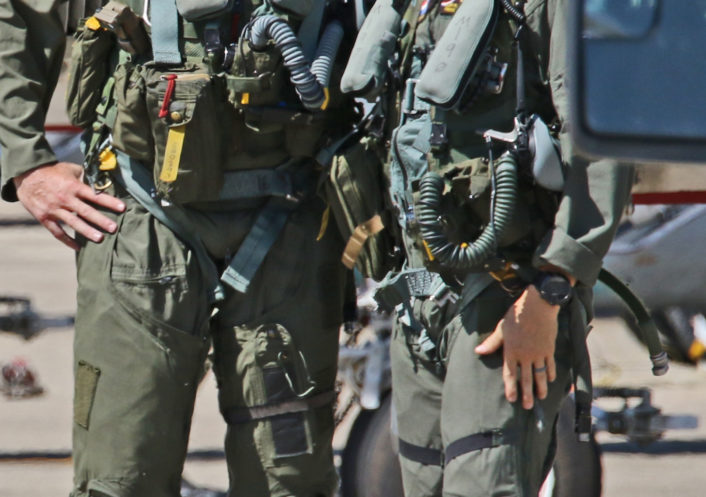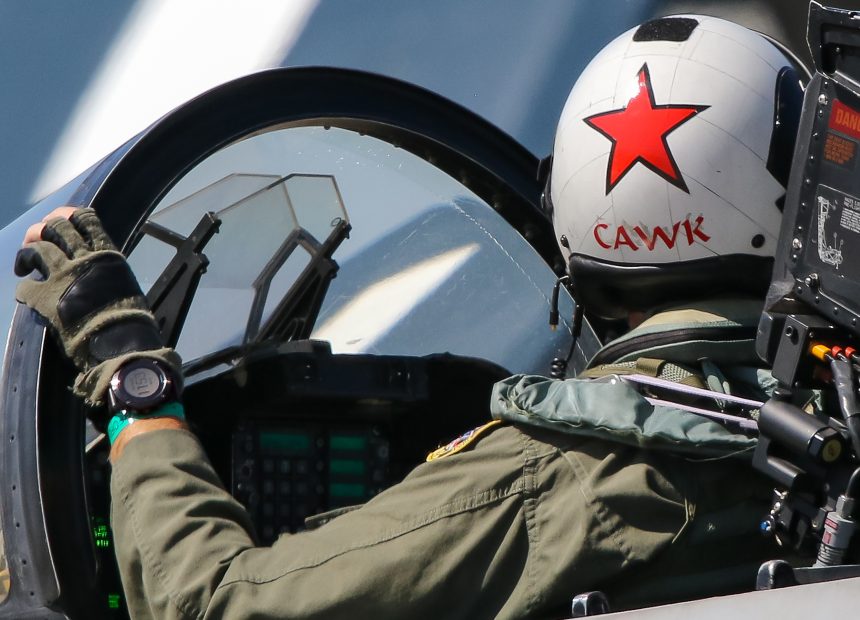Garmin GPS Watches Worn by Hornet Crews Augment Situational Awareness in Emergencies.
Last week we did a quick, informal photo survey of the wrist watches worn by F/A-18 Hornet and F-35 Lightning II pilots at MCAS Miramar. Following our article about fighter pilot watches, several sources contacted TheAviationist.com with insights about why we saw so many Garmin GPS smart watches.
Here’s what we didn’t know when we first shot the pilot watch photos, and the reason why so many fighter pilots are wearing Garmin.
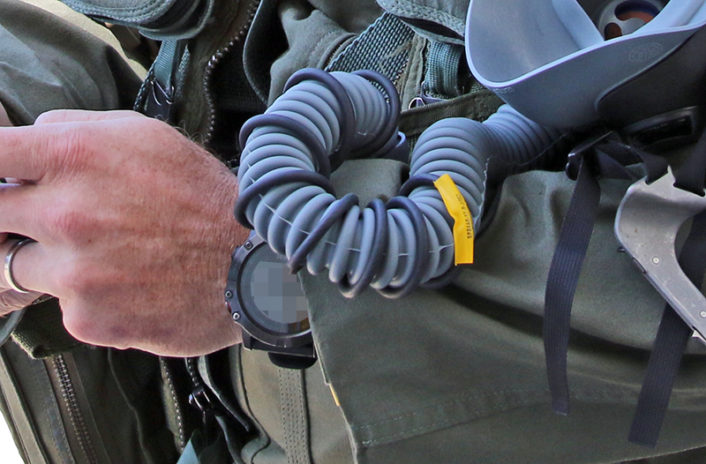
You may recall a remarkable news story reported by both Joseph Trevithick for TheWarZone.com and David B. Larter for DefenseNews.com back in February 2018.
Trevithick and Larter wrote about a bizarre incident on January 29, 2018, with a U.S. Navy E/A-18G Growler from Air Test and Evaluation Squadron Nine (VX-9), also called AIRTEVRON NINE, “The Vampires”. The aircraft suffered a catastrophic failure of its environmental control system at 25,000 feet. It was en route from Naval Air Station Whidbey Island to Naval Weapons Station China Lake when the failure occurred. Within minutes, the temperature in the cockpit dropped to well below zero degrees Fahrenheit. Condensation formed, then froze in a thick layer inside the cockpit, obscuring the two-person crew’s view outside of the aircraft. The ice build-up quickly covered vital flight control instruments, making instrument flying nearly impossible as the crew began to suffer the first symptoms of hypothermia. According to Larter’s story on the incident, the failure wound up, “…rendering the pilots almost completely blind, according to several sources familiar with the incident and an internal report obtained by Defense News.”
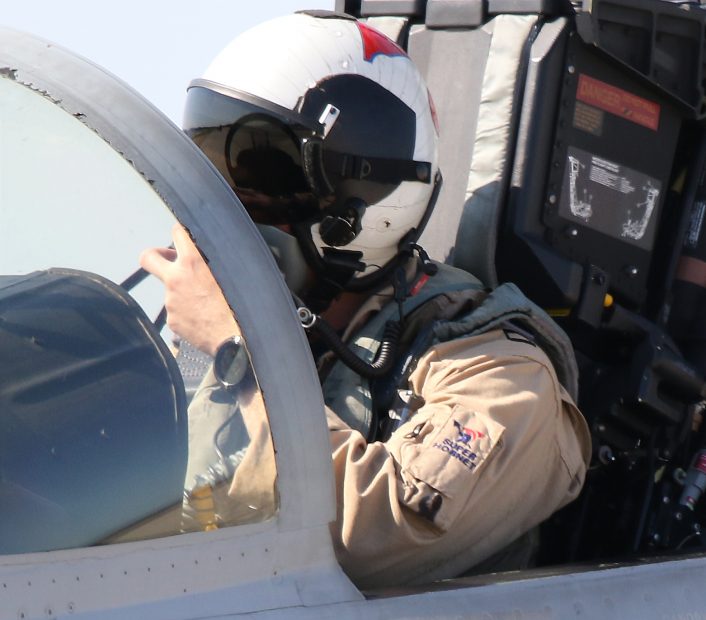
Larter went on to write about the remarkable outcome:
“The fog inside the aircraft iced over the instrument panel, forcing the pilot and electronic warfare officer to use a Garmin watch to keep track of their heading and altitude while air controllers began relaying instructions to the crew. The pilot and EWO were forced to use the emergency oxygen supply, which was completely depleted by the end of the flight.
A heroic effort by the two-person crew and the ground-based controllers managed to guide the aircraft back to Whidbey Island, but both pilot and EWO suffered serious injuries due to frostbite. The aircrew suffered from ‘severe blistering and burns on hands,’ according to the Navy internal report.”
Fortunately for the crew of this E/A-18G Growler, sometime before spring of 2017 (reports vary on specifically when) the Navy began issuing Garmin GPS smart watches to pilots of the F/A-18 Hornet, E/A-18G Growler and T-45 Goshawk. The first round of watches issued was the Garmin Fenix 3, a watch originally intended for endurance athletes like triathletes, off-road cyclists, adventure racers and distance runners.
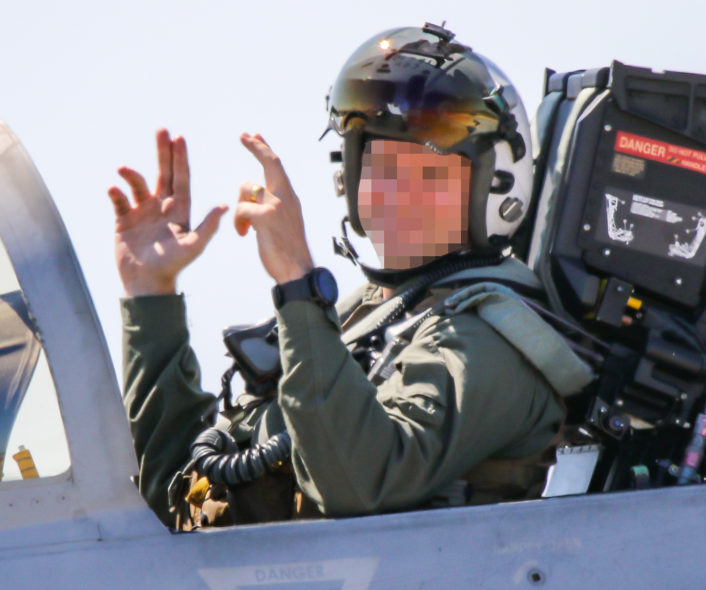
Since aviators began using Garmin “wrist top computer” GPS-equipped smart watches, the company has introduced several new, aviation specific watches called the Garmin D2 Bravo Pilot, the D2 Charlie, D2 Delta PX and flagship Garmin MARQ series, which includes the MARQ Commander and Aviator, models that actually “Check with Pulse Ox³ to gain awareness of how well your body’s oxygen levels are adjusting to the thinner air at higher altitudes.” The flagship MARQ Commander and Aviator models retail for 1,950.00 USD according to Garmin.

The Garmin story actually becomes even more interesting though. In a February 14, 2018 media release from Garmin’s marketing department, the company said, “We are excited to announce the D2 Charlie aviator watch has been selected by the United States Air Force (USAF) for use by the pilots of the Lockheed U-2 aircraft. The high-sensitivity WAAS GPS-enabled D2 Charlie aviator watch incorporates global navigation capability, rich and colorful moving maps and more, providing pilots in the USAF with an exclusive, back-up navigation timepiece in the cockpit.” The announcement means that much of the basic flight instrumentation and basic navigation data from an aircraft’s instruments are now redundant on the pilot’s wrist as an emergency back-up.
It’s interesting that Garmin hasn’t used their new-found military street cred more aggressively in marketing campaigns. Other than a few low-ley company press releases, which didn’t receive very much notice in aviation media until the January 29, 2018, E/A-18G Growler incident when a Garmin saved the day, the public hasn’t known much about Garmin’s quiet entry into military aviation.
